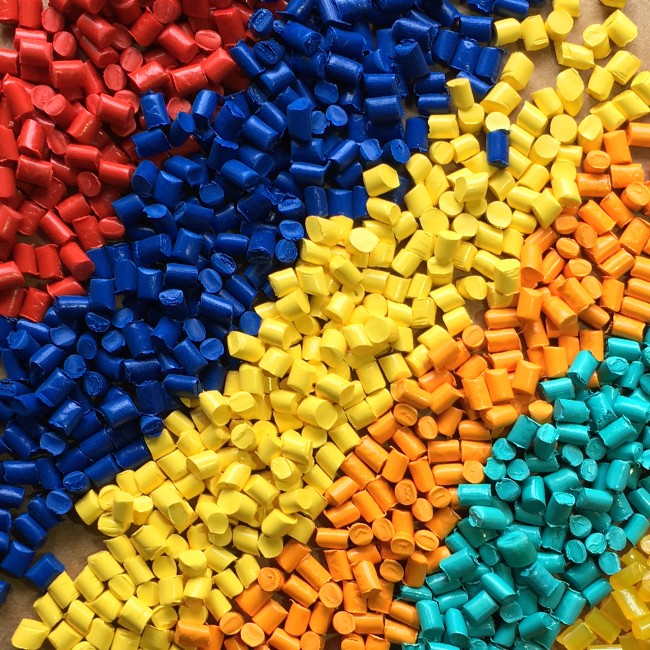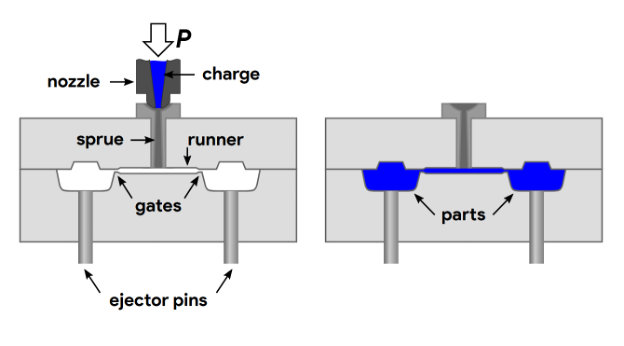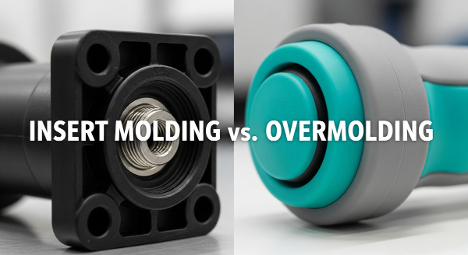Contents
In the realm of plastic manufacturing, the term ‘masterbatch’ is pivotal. A masterbatch is a concentrated mixture of pigments and/or additives encapsulated within a carrier resin, which can be cooled and cut into a granular shape. This granulated form is then used to impart specific properties to plastics during the injection molding process, offering a cost-effective and efficient way to achieve desired product characteristics.

Components and Types of Masterbatch
Masterbatches are composed of three primary components:
1. Carrier Resin: This is the base base material that carries the pigments and additives. The choice of carrier resin is critical as it must be compatible with the main polymer used in injection molding.
2. Additives:These are substances added to enhance the properties of the final product. Common additives include UV stabilizers, flame retardants, and antioxidants.
3. Pigments:These are used to impart color to the plastic. Pigments must be chosen carefully to ensure they do not affect the mechanical properties of the plastic.
Masterbatches can be categorized based on their function:
- Color Masterbatch: Used to add color to the plastic products. These can be tailored to produce any hue and can include effects like pearlescent, metallic, or fluorescent finishes.
- Additive Masterbatch: Adds specific properties to the plastic, such as increased UV resistance, antimicrobial effects, or improved flame retardancy.
- Filler Masterbatch: Used to reduce production costs by incorporating materials like calcium carbonate, which can also enhance certain physical properties of the final product.
The Injection Molding Process
Injection molding is a widely used manufacturing process for producing parts by injecting molten material into a mold. The process involves several stages:
1. Clamping: The mold is closed by a clamping unit.
2. Injection:The polymer is heated and injected into the mold cavity.
3. Cooling:The molten plastic cools and solidifies within the mold.
4. Ejection: The finished part is ejected from the mold.
Masterbatch is introduced into the injection molding machine, where it mixes with the base polymer to achieve the desired characteristics. This process ensures a uniform distribution of the pigments and additives throughout the product.
Benefits of Using Masterbatch in Injection Molding
- Consistency and Quality: Masterbatch ensures uniform dispersion of colors and additives, resulting in consistent quality across production batches.
- Cost Efficiency: By using concentrated pigments and additives, manufacturers can reduce the overall cost of raw materials.
- Flexibility: Masterbatch allows for quick and easy color changes and property adjustments without the need to alter the entire production line.
- Improved Performance: Additive masterbatches can significantly enhance the performance characteristics of the final product, such as UV resistance and flame retardancy.
Application Areas
Masterbatch is used across various industries due to its versatility:
- Packaging: In food and beverage packaging,masterbatches are used to ensure compliance with safety standards while providing aesthetic appeal.
- Automotive: Masterbatch can improve the durability and aesthetic qualities of interior and exterior automotive parts.
- Consumer Goods: From toys to household appliances, masterbatch helps in achieving vibrant colors and specific functional properties.
- Construction: Used in pipes, fittings, and other materials, masterbatch ensures longevity and performance under harsh conditions.
Challenges and Considerations
Despite its advantages, using masterbatch in injection molding presents some challenges:
- Compatibility: The carrier resin must be compatible with polymer to prevent issues like delamination or poor mechanical properties.
- Dispersion: Ensuring the even dispersion of the masterbatch in the polymer matrix is crucial for maintaining consistent quality.
- Environmental Impact: As with all plastic products, the environmental impact of masterbatch production and use must be considered. Innovation in biodegradable and sustainable masterbatch solutions are emerging to address these concerns
Future Trends
The future of masterbatch in injection molding looks promising with ongoing innovations:
- Biodegradable Masterbatch: Development of eco-friendly masterbatch solutions that minimize environmental impact.
- Smart Additives: Incorporation of smart additives that can provide functionalities like self-healing or change in response to environmental conditions.
- Advanced Color Effects: Development of new pigments that offer unique visual effects and enhanced properties.
Conclusion
Masterbatch plays a crucial role in the injection molding industry, providing manufactures with the tools to enhance the appearance, performance, and cost-efficiency of their plastic products. As the industry continues to innovate, masterbatch will remain integral to producing high-quality, functional, and aesthetically pleasing plastic goods. Understanding its components, benefits, and applications is essential for leveraging its full potential in manufacturing processes.
-q4gvl4k29y4hq8j9rjpapvj0ft06fje63olt7p210i.png)


